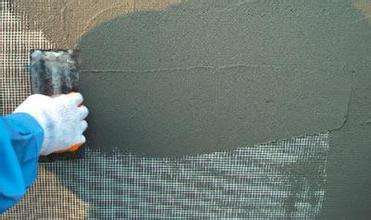Attention must be paid to the strength of building mortar
1、 Strength of building mortar
In engineering, compressive strength is often used as the main technical index of mortar.
Mortar is mainly used to transfer load in masonry. The test results show that: the bond strength and durability of mortar increase with the increase of compressive strength, that is, there is a certain correlation between them, and the test method of compressive strength is relatively mature, and the test is relatively simple and accurate, so the compressive strength is often used as the main technical index of mortar in engineering. The bonding strength and durability of mortar can be achieved by adding hydroxypropyl methyl cellulose and redispersible latex powder. The strength grade of mortar is determined by the 28 day old compressive strength of cube test block with side length of 70.7mm under standard curing conditions (temperature of cement mixed mortar is 20 ± 2 ℃, relative humidity is 60% ~ 80%; temperature of cement mortar is 20 ± 2 ℃ and relative humidity is above 90%), the compressive strength of 28 days is determined by standard test method. The strength grades of masonry mortar are M20, M15, M10, M7.5, M5 and M2.5.
Hydroxypropyl methyl cellulose has good water retention effect, and adding appropriate hydroxypropyl methyl cellulose in mortar can play a better curing effect.

2、 Factors affecting mortar strength
There are many factors that affect the strength of mortar. The experiment shows that when the quality of raw materials is certain, the strength of mortar mainly depends on the strength grade and cement quantity.
3、 The use of building mortar
1. Mix proportion design of masonry mortar
The mix ratio design of masonry mortar shall meet the following basic requirements:
(1) The workability of mortar mixture shall meet the construction requirements, and the volume density of the mixture shall be: cement mortar ≮ 1900kg/m3; cement mixed mortar ≮ 1800kg/m3.
(2) The strength and durability of masonry mortar shall meet the design requirements.
(3) It should be reasonable economically, and the amount of cement and admixture should be less.
2. Application of masonry mortar in Engineering
Cement mortar should be used for masonry with high requirements in wet environment and high strength; cement lime mortar should be used for masonry in dry environment; wall of multi-storey buildings generally adopts cement lime mortar with strength grade of M5; cement mortar with strength grade of m5-m10 is generally used for brick column, brick arch, reinforced brick lintel, etc.; cement mortar with strength grade of m5-m10 is generally used for brick foundation; low layer cement mortar is generally used for brick foundation Lime mortar can be used for houses or bungalows; lime clay mortar can be used for simple houses.
4、 Plastering mortar
1. Concept and function of common plastering mortar
Mortar applied to the surface of buildings or building members shall be referred to as plastering mortar.
According to the different functions of plastering mortar, the plastering mortar can be divided into ordinary plastering mortar, decorative mortar and plastering mortar with some special functions (such as waterproof mortar, adiabatic mortar, sound absorption mortar, acid resistant mortar, etc.).
The function of ordinary plastering mortar is to protect the wall and ground from the erosion of wind and rain and harmful impurities, improve the moisture-proof, corrosion and weathering resistance, and increase durability; at the same time, it can make the building reach
To the surface of the smooth, clean and beautiful effect.
2 technical requirements for plastering mortar
The plastering mortar is required to be good and easy to apply to a uniform and flat thin layer, which is easy to construct. There should also be a high bond force. The mortar layer should be able to bond firmly with the bottom surface, and it will not crack or fall off for a long time. It should be in humid environment or easily subjected to external force (such as ground, wall skirt, etc.), and it should also have high water resistance and strength. Shandong chuangyao Biotechnology Co., Ltd. has a deep research on mortar additives, and has specific reference formula for mortar enterprises.
3 construction characteristics and methods of ordinary plastering mortar
Ordinary plastering mortar is usually divided into two or three layers for construction. The mortar requirements of each layer are different, so the mortar selected for each layer is different. Generally, the bottom mortar plays the role of bonding base, which requires that mortar should have good workability and high bond force. Therefore, the water retention of the bottom mortar is better, otherwise the water is easily absorbed by the base material and affects the adhesion of mortar. The rough surface of the base is beneficial to the bonding with mortar. The middle plastering is mainly for leveling, sometimes it can be avoided. The surface plastering is mainly for smooth and beautiful, so fine sand should be selected.
4 selection of plastering for brick wall, slat wall or slab ceiling, concrete wall, etc., and the bottom layer plastering where it is easy to collide or wet

Lime mortar is usually used for bottom plastering of brick wall; mixed mortar or lime mortar is mostly used for bottom plastering of slab wall or slab ceiling; mixed mortar, hemp knife lime slurry or paper reinforced lime mortar are used for bottom plastering of concrete wall, beam, column and roof.
Cement mortar shall be used in the places easy to be collided or wet. Such as wainscot, skirting board, ground, canopy, windowsill, pool, well and other places generally use 1:2.5 cement mortar.
{aspcms:comment}





